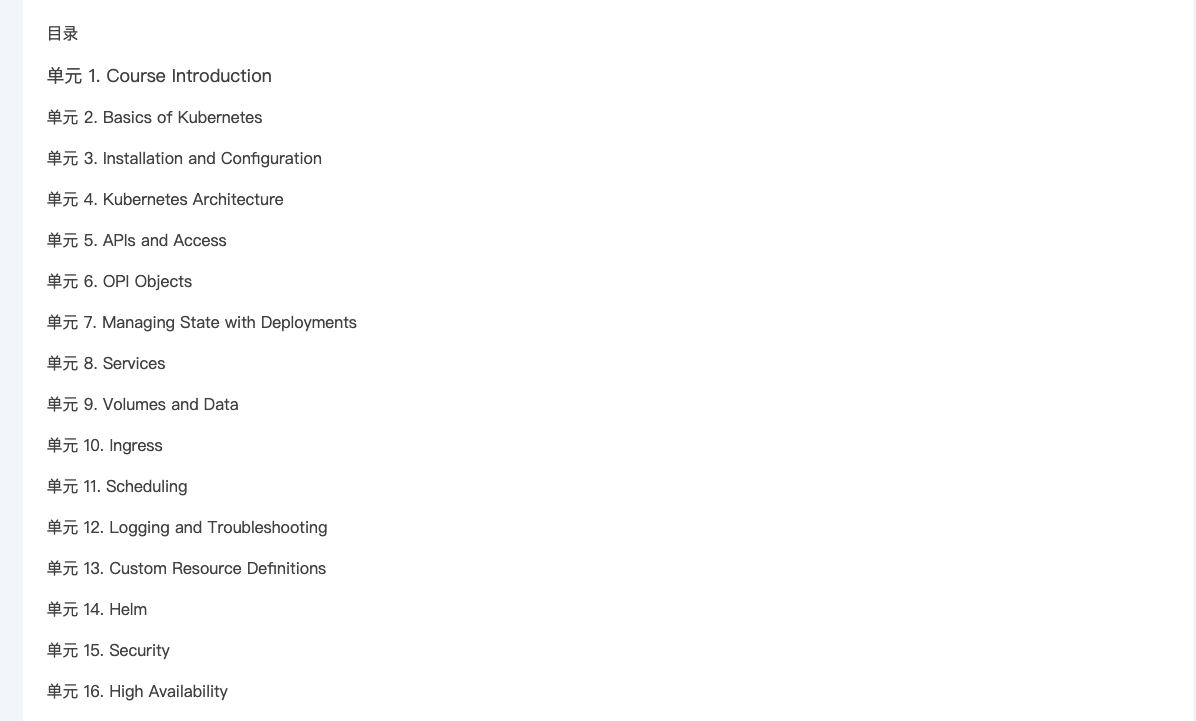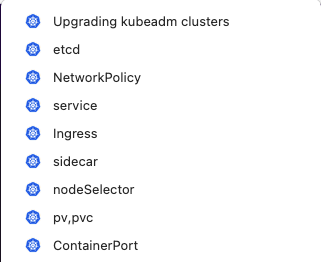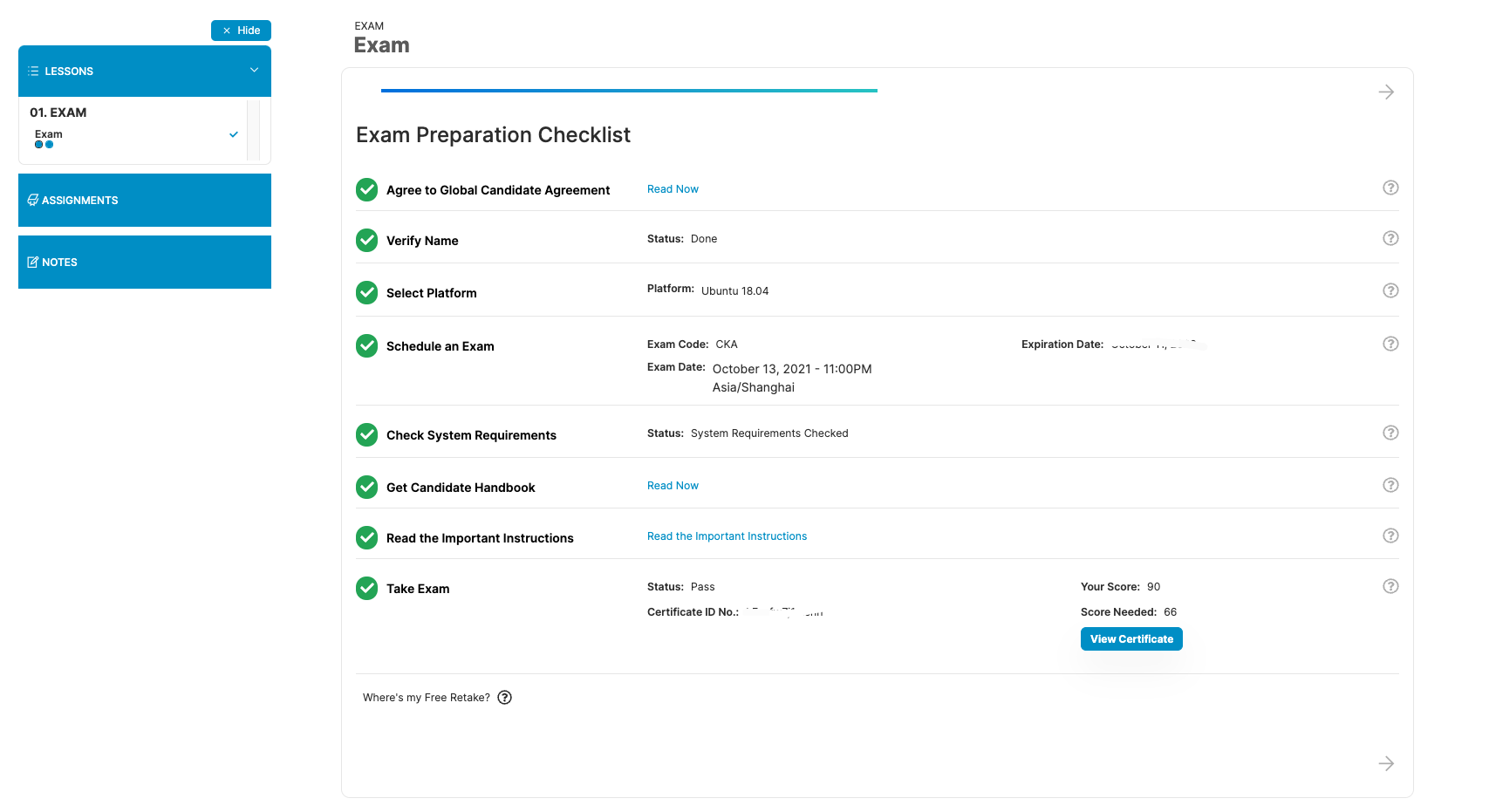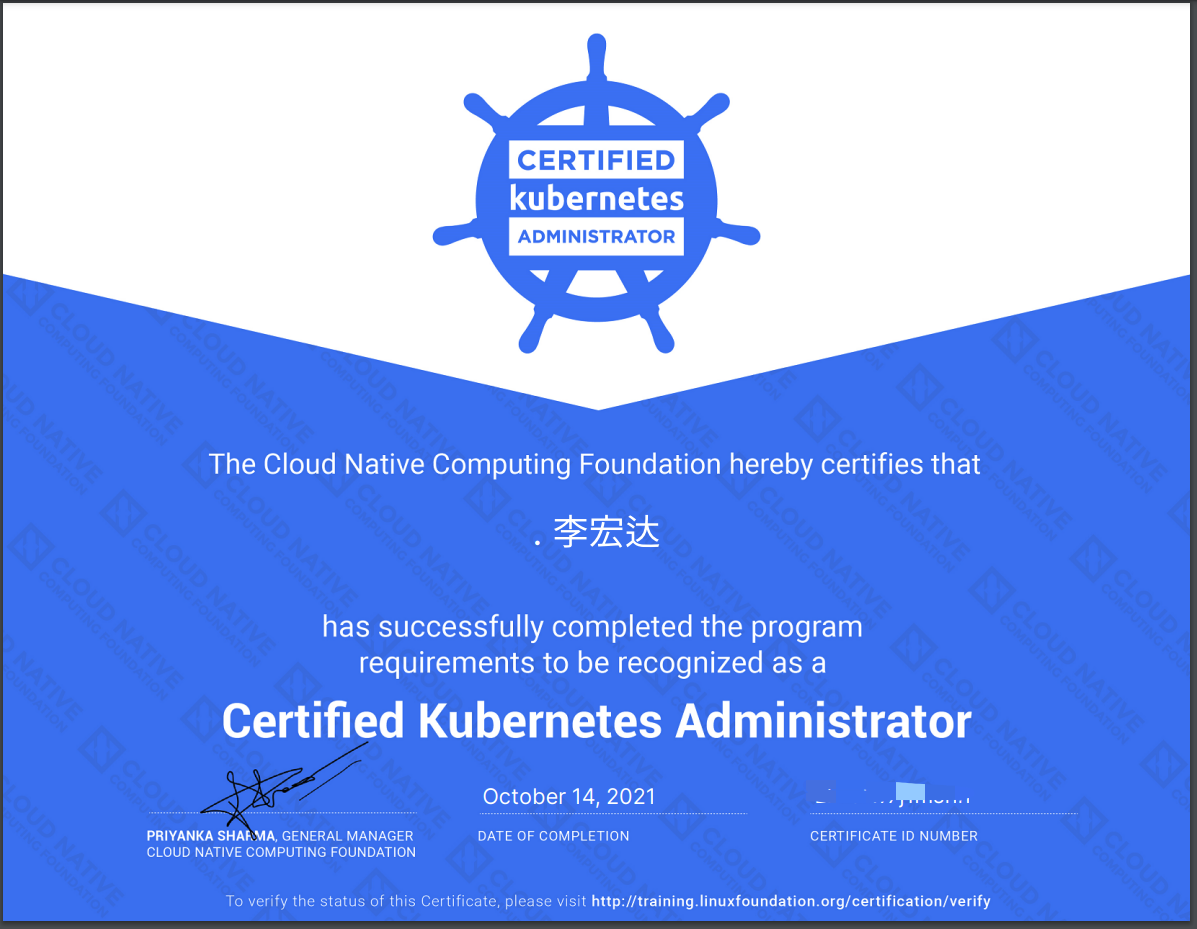一 、K8S
1. 什么k8s?
Kubernetes 是一个可移植的、可扩展的开源平台,用于管理容器化的工作负载和服务,可促进声明式配置和自动化。 Kubernetes 拥有一个庞大且快速增长的生态系统。Kubernetes 的服务、支持和工具广泛可用。
Kubernetes 这个名字源于希腊语,意为“舵手”或“飞行员”。k8s 这个缩写是因为 k 和 s 之间有八个字符的关系。 Google 在 2014 年开源了 Kubernetes 项目。Kubernetes 建立在 Google 在大规模运行生产工作负载方面拥有十几年的经验 的基础上,结合了社区中最好的想法和实践。
2. 为什么需要 Kubernetes,它能做什么?
容器是打包和运行应用程序的好方式。在生产环境中,你需要管理运行应用程序的容器,并确保不会停机。 例如,如果一个容器发生故障,则需要启动另一个容器。如果系统处理此行为,会不会更容易?
这就是 Kubernetes 来解决这些问题的方法! Kubernetes 为你提供了一个可弹性运行分布式系统的框架。 Kubernetes 会满足你的扩展要求、故障转移、部署模式等。 例如,Kubernetes 可以轻松管理系统的 Canary 部署。
3. 基本组件

二、CKA
1. 什么是CKA?
- The Certified Kubernetes Administrator (CKA) program was created by the Cloud Native Computing Foundation (CNCF), in collaboration with The Linux Foundation, to help develop the Kubernetes ecosystem.
2. CKA费用相关
- 考试费$375,有一次免费重考的机会。
- 官方培训视频课程LFS258人民币1988元,全英文授课的,用Google实时字幕功能翻译的很准确,可以辅助听课,共18章,有两章是介绍和总结,一般每章都有4个模块。
- 国内的培训费大几千上万,学习能力可以的同学个人认为自学即可,培训肯定都以通过为主,掌握的并不是很全面。
- 学习成本还好,集中学习一个月左右即可,每天2h以上,主要是概念比较多,看个人能力和时间分配。
3. 考试相关
- 目前是线上实时监考,会有一个监考老师,要求带有摄像头的设备参加考试,周边环境安静,桌子不允许有其他东西。
- 考试代码有两个CKA-CN CKA-EN 区别就是监考老师是中文还是英文。PS:中文说的也很别扭估计也是懂中文的老外。
- 考试过程中允许查阅官方文档,建议提前做一些书签。只可以开两个tab,一个是考试界面,一个是官方文档。
- 报名后会给你提供两次每次48h的实验环境进行练习,同时提供答案,练习题难度会比考试难。
- 网络都说需要科学上网,实际测试考试过程中不需要,但是k8s官网不翻墙的话会很慢。
- 120 min,17道大题,全是动手实验环境,时间还是很紧张的,建议合理分配。
- 百分制,66分通过。
4. 考试内容和占比
- 25% - Cluster Architecture, Installation & Configuration
Manage role based access control (RBAC)
Use Kubeadm to install a basic cluster
Manage a highly-available Kubernetes cluster
Provision underlying infrastructure to deploy a Kubernetes cluster
Perform a version upgrade on a Kubernetes cluster using Kubeadm
Implement etcd backup and restore - 15% - Workloads & Scheduling
Understand deployments and how to perform rolling update and rollbacks
Use ConfigMaps and Secrets to configure applications
Know how to scale applications
Understand the primitives used to create robust, self-healing, application deployments
Understand how resource limits can affect Pod scheduling
Awareness of manifest management and common templating tools - 20% - Services & Networking
Understand host networking configuration on the cluster nodes
Understand connectivity between Pods
Understand ClusterIP, NodePort, LoadBalancer service types and endpoints
Know how to use Ingress controllers and Ingress resources
Know how to configure and use CoreDNS
Choose an appropriate container network interface plugin - 10% - Storage
Understand storage classes, persistent volumes
Understand volume mode, access modes and reclaim policies for volumes
Understand persistent volume claims primitive
Know how to configure applications with persistent storage - 30% - Troubleshooting
Evaluate cluster and node logging
Understand how to monitor applications
Manage container stdout & stderr logs
Troubleshoot application failure
Troubleshoot cluster component failure
Troubleshoot networking
三、题库
- 笔者自己整理了一些,感兴趣的可以留言管我要,最后希望这篇文章能帮助有需要的同学。
四、相关截图
1. LFS258


2. 书签

3. 证书








